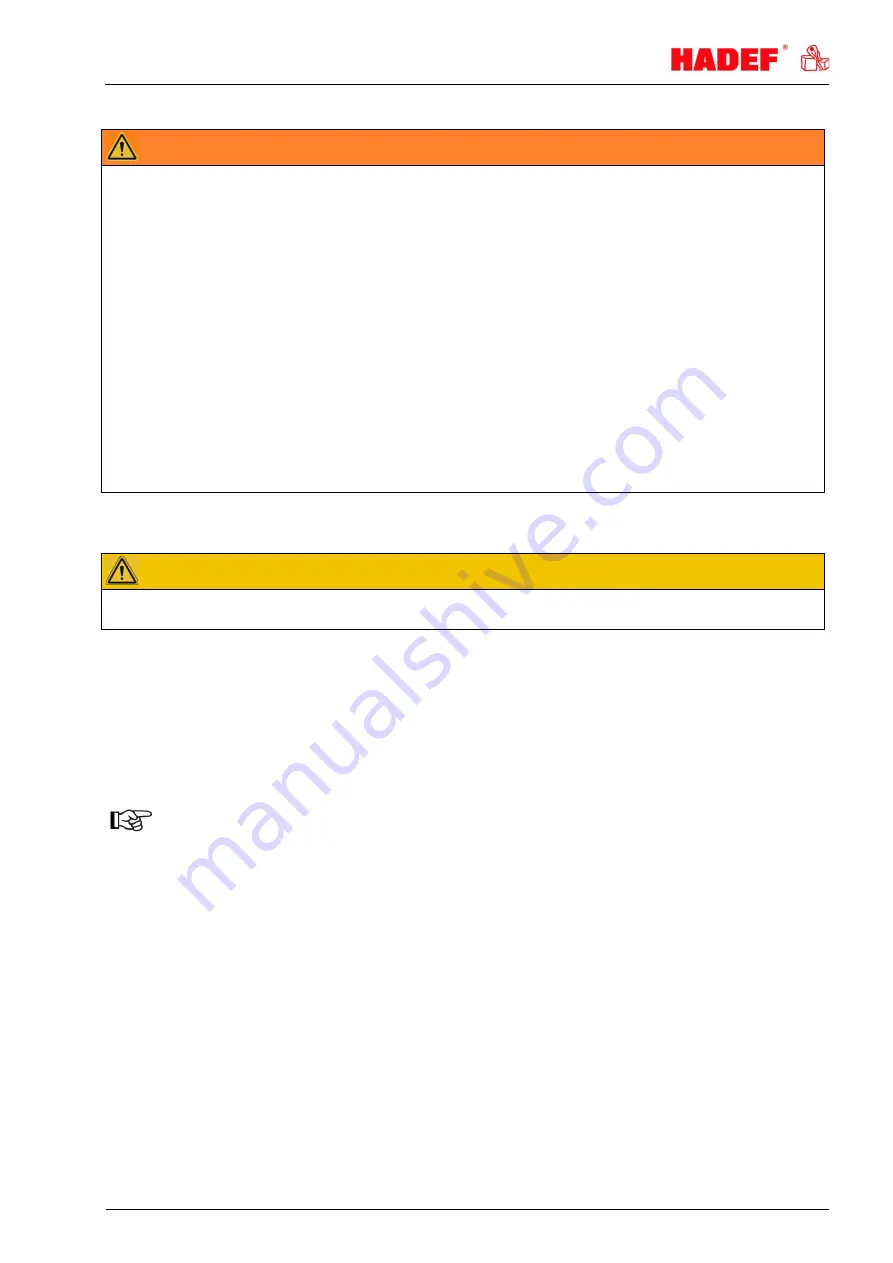
5.52.157.00.01.05
7
WARNING!
The following is not allowed:
to lift another load than the nominal safe working load
to manipulate the sliding clutch
The use of elongated or damaged chains. Replace worn out chains immediately by new, original chains.
Never loop the load chain around a load nor place or pull the chain over edges.
Never repair damaged load hooks (e.g. by hammering). They must be replaced by original hooks.
Do not operate the hoist by stepping on the lever with a foot.
Never use an elongation piece for the lever.
It is prohibited to charge the load hook at its point. (Only allowed for hoists with shipyard hook)
It is prohibited to weld or cut when a load is suspended.
It is prohibited to swing the load.
It is prohibited to use the load chain for earthing during welding.
Do not use the hoist when it makes abnormal noise.
Do not use the lever without rubber handle.
Do not leave a lifted load unintended for a longer period of time.
3
Transport and Storage
CAUTION!
Transport may only be done by qualified personnel. No liability for any damage resulting from improper
transport or improper storage.
3.1
Transport
The devices are checked and if so adequately packed before delivery.
Do not throw or drop the equipment.
Use adequate means of transport.
Transport and means of transport must be suitable for the local conditions.
3.2
Safety device for transport
NOTICE!
Should a safety device for transport exist, please remove it before commissioning.
3.3
Storage
Store the equipment at a clean and dry place.
Protect the equipment against dirt, humidity and damage by an appropriate cover.
Protect hooks, wire ropes, chains and brakes against corrosion.
4
Description
4.1
Areas of application
The devices must be as far as possible installed in a covered room.
If they are used in the open, protect the units against the effects of weather such as rain, hail, snow, direct
sunshine, dust, etc. - we recommend to use a cover in parking position. If the device is set up in a
continuously humid environment with strong temperature fluctuations, the correct functionings are
endangered by the forming of condensation.
Ambient temperature -20°C up to +50°C. Power-operated units -20 up to +40°C. Humidity 100 % or less but
not under water




























